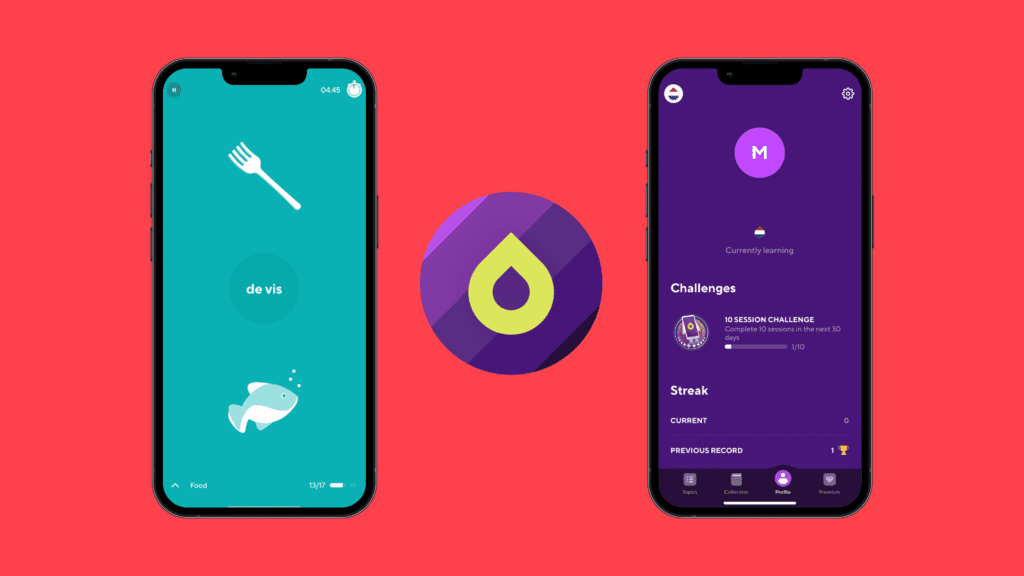Ludification vs Gamification : What’s the Difference?
29 June 2022
Estimated reading time: 6 minutes
Margarita and Margherita are two different things. Margarita is a cocktail, and Margherita is the pizza you order because you don’t know what other people eat. Very different!
You wouldn’t call a pineapple an apple, just because there’s apple in both words, would you?
That’s what happens when people think of gamification and ludification. Just because the two words refer to games, it doesn’t mean they are synonyms.
How about we take it step by step and understand what is the difference between ludification vs gamification?
What is gamification?

If you read our gamification blog post, you probably know this by heart now.
If you haven’t yet, gamification is the usage of game mechanics (levels, rewards, points…) in non-game settings. The aim of doing so is to influence the user’s behavior in doing certain actions you want them to do.
For example, if you want them to comment on your blog for example, or share your article, you can give your users certain incentives to do that through gamification.
Apps are increasingly implementing gamification in their design, can you think of an app you frequently use that is gamified?
Marketers are also very interested in this concept because it allows them to tackle different obstacles such as retention or engagement.
Now that you have a quick overview of what gamification is, how about ludification?
What is ludification?

Ludification is the process of adding the fun aspect to something that is initially not.
The purpose of ludification is to reduce the pain that a user may encounter in engaging in a not-so-fun process. For example, learning a new language.
Do you notice that the definition of ludification merely restricts itself to the operation of including fun, and nothing else.
You might not know that, but ludification and gamification are closely researched by scholars in the field. Different theoretical points of views have been produced over the decades.
Friedrich Schiller, a German philosopher said that we are only fully human when we play. Whether you agree or disagree, social sciences have emphasized the role of play in our culture.
Basically, ludification takes something that’s not a game and makes it into one for the sake of it. And that’s what we’ll be talking about in the difference between gamification and ludification.
Ludification vs Gamification: What’s the difference?

So both use game elements, right? Right. What’s the difference then?
Gamification and ludification are different, but that does not mean they are mutually exclusive.
The key difference between gamification and ludification lies in the objective of each.
Remember what we said about gamification? It’s used to steer the user’s behavior in the direction that is desired.
You want your user to do certain things? Gamification is your go to.
The objective of ludification, on the other hand, is to provide the user with a playful experience.
The main focus of gamification is the user experience, whereas ludification addresses the game itself.
Following to that, when you are in the process of gamifying your experience, the user should be the center of your design and you always answer the question “how is the user going to use this? How are they going to benefit from that?” etc.
While ludification, you are trying to come up with ideas to make your product less monotonous. It doesn’t respond to strict rules and is more dependent on fantasy and imagination.
This does not mean that when interacting with gamification you should not have fun. As earlier mentioned, the two concepts are not mutually exclusive.
How about an example to understand this better?
Ludification vs Gamification: The case of learning a language

Learning a new language is a long process.
Good for you, there’s a wide range of language apps out there, but now it’s difficult to choose one.
Let’s take a look at Drops.
Drops aims at teaching you the everyday words you will need. You’re just learning for now, you’re not going to debate Spinoza’s deterministic philosophy, it’s okay.
How does Drops do that? 5-minute daily lessons, so you can do it whenever, wherever you want. You can always find 5 minutes to do it.
Drops makes use of both ludification and gamification.
The different exercises to learn new words are ludified in different ways like matching words to their equivalent picture. Since it’s intrinsic to the app, it’s ludification. If the exercise asks you to do it that way, you have no way to doing any other way. In other words, you’re not being nudged into altering your behavior.
On the other side, Drops also includes challenges like having to complete lessons for a consecutive number of days. The moment you say challenge, you know it’s gamified because it gives you a mission to accomplish for which you’ll be rewarded. To achieve this, the app shows you your streak – the consecutive number of days you have logged in to the app and completed your 5-minute lesson.
By doing so, the application gets you coming back by stimulating your intrinsic and extrinsic motivation. Smart, isn’t it?
You can now learn that language you’ve been forever planning on learning but never found the time.
Ludification vs Gamification: You choose your fighter
The difference between ludification and gamification is quite significant. However, that does not mean the two concepts cancel each other out.
If gamification’s purpose is to nudge the user’s behavior into doing specific tasks, then ludification focuses rather on the game itself and how to make it more fun.
To conclude, if you want to read more about this topic, I recommend you Roman Jauneaux’s article.
Written by:
Majdi Hentati
About the author:
When he’s not writing, Majdi is either thinking about copywriting, reading or sleeping. He helps you to write compelling copies to reinforce your e-reputation. If you want to connect with him, he’ll be delighted to chat with you on his Linkedin.
